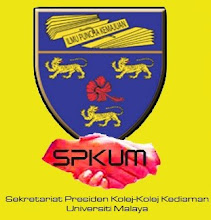
THE observation that Sabah and Sarawak are living examples of the 1Malaysia concept cannot get a better endorsement than from the prime minister himself.
Datuk Seri Najib Razak described the spirit of unity in these two states as the coming together of "many things that unite us, instead of allowing the few things that divide us to drive us apart".
"Malaysians of any race or creed need simply look to Sabah and Sarawak to gain an understanding of the incredibly strong and harmonious unity that can be found in accepting and respecting the diversity of our nation."
The operational word is "understanding" before we can arrive at "accepting and respecting" our diversity. And this "understanding" must be nurtured from day one, if it has to have an enduring effect.
Indeed, my very first experience in Sabah in 1968, in an attempt to scale Mount Kinabalu, is still vivid as I experienced first-hand how cohesive the community was.
What's most striking was that almost everyone was conversant in a common language -- Bahasa Malaysia with an Indonesian-sounding slang!
The country was then on the verge of introducing Bahasa Malaysia as the medium of instruction in school, in the search of a common language as it were.
Evidently, the state of affair in Semenanjung then (as it is now) was very different.
In contrast, the situation in Sabah was more favourable, despite minor differences, for example kita means "you" in a polite way, and kami means "we" (rather than "us").
There are other words too, but these are just nuances that hardly make any difference, bearing in mind there are more than 60 ethnic groups in Sabah alone.
This early experience convinced me as to the importance of a common lingua franca, if unity is to be the ultimate goal; for the simple reason that people must be able to express themselves well before bonding and trust can be built upon it.
Soon enough it does not matter too much if you are Kadazan, Dusun (then they were identified separately), Bajau, Chinese or Indians (though they are fewer of them).
So too whatever the religious beliefs.
The trust forged has created a steadfast community. In fact, it is not surprising to see these mosaics in many Sabahan families.
Semenanjung Malaysia, where the people are still grappling with the issue of a common lingua franca, has much to learn from them.
Though Bahasa Melayu (later on, Malaysia) is constitutionally declared as the national language, its popular usage is unlike that in Sabah and Sarawak.
The supposedly mature Semenanjung needed to have a "Bahasa Jiwa Bangsa" campaign, unlike the other two states.
Even today, we can still spot people miming the Negaraku because, I suspect, they are not familiar with the language.
If they are familiar, the depth is missing, thus tanah tumpahnya darahku is no more than "a place where I bleed". So what?
Luckily, Semenanjung also has its 1Malaysia community though we have largely ignored it or are less interested in it.
Think of the Peranakan: not just the Chinese- or Indian-dominated communities (the latter better known as the Chitty). There are also the Eurasian Peranakan (or Kirstang, referring to the Christians), Indian Muslim Peranakan (Jawi Pekan) and so on.
The word Baba as in Baba-Nyonya is said to be a Persian word used by all Malaysians and meant as a honorific title, a mark of respect.
Typically, too, they have developed their own distinctive, hybrid culture, proudly fusing their own heritage with local Malay influences, ranging from food to clothing and jewellery, and even language -- as a dialect of Bahasa Melayu.
Nevertheless, most still retain their religious practices, for example, in ancestral worship.
The 1Malaysia concept among us has always been there all along, except that we are too preoccupied with our divisive ways to notice, less still promote them, especially in cases of political expediency.
Thus, over the years, the Peranakan communities have shrunk because of integration with other communities or inter-marriages.
The boundary that divided them from the rest of the mainstream ethnic communities was becoming increasingly vague, said Emeritus Professor Tan Sri Khoo Khay Kim, himself a Peranakan, in a keynote address last year.
There are some among us who have unkindly condemned the Peranakan as a mere accident of history.
These 1Malaysia communities are real, they are breathing evidence for us to see under the new brand -- 1Malaysia -- but only so long as we recognise and work consistently to nurture them back into the mainstream of this country's proud tradition, bound together by a single lingua franca, Bahasa Malaysia.
Otherwise, sadly, they will lapse into oblivion as mere museum exhibits as the tendency is today.
This only means that the realisation of 1Malaysia as a viable concept will face a daunting uphill battle.
The writer is vice-chancellor of Universiti Sains Malaysia. He can be contacted at vc@usm.my






No comments:
Post a Comment